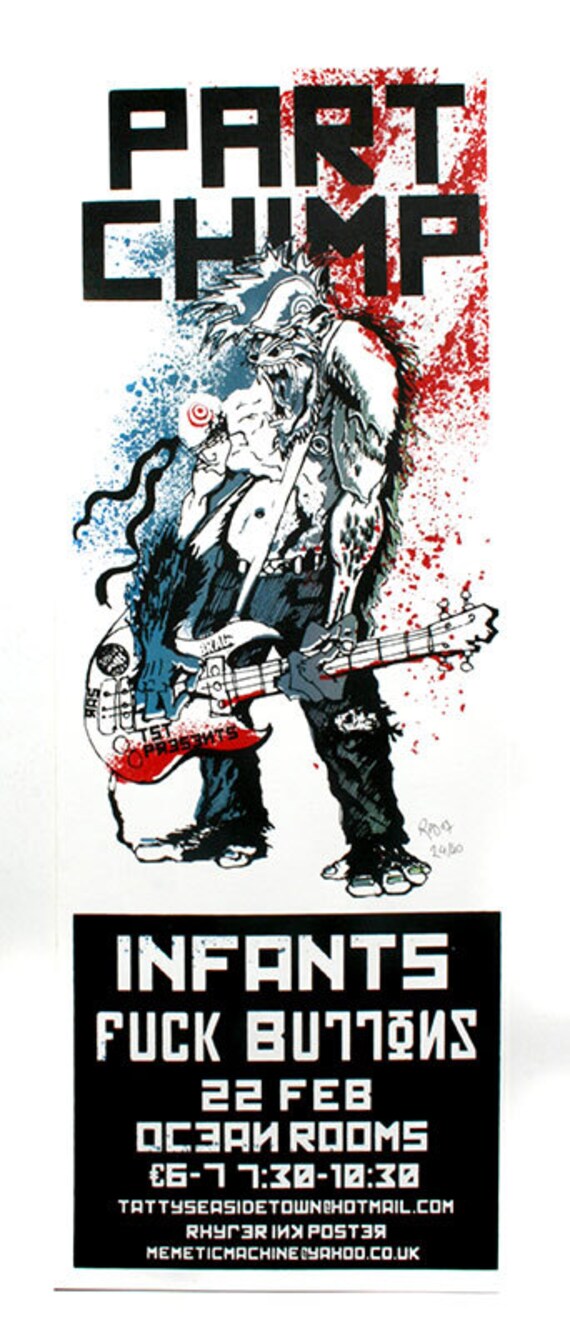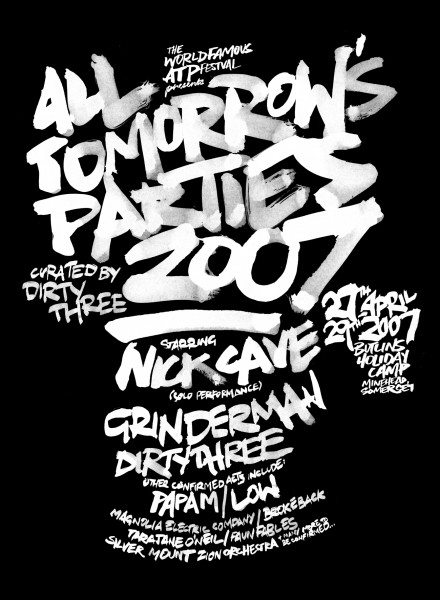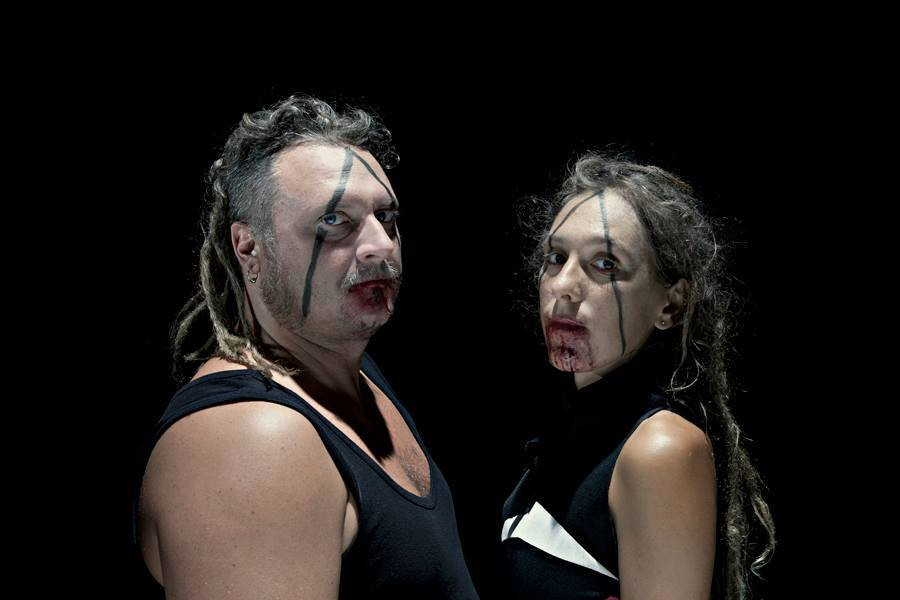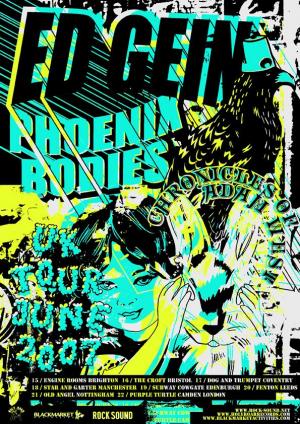YOU GUYS CAN DO THE BRAIN THING
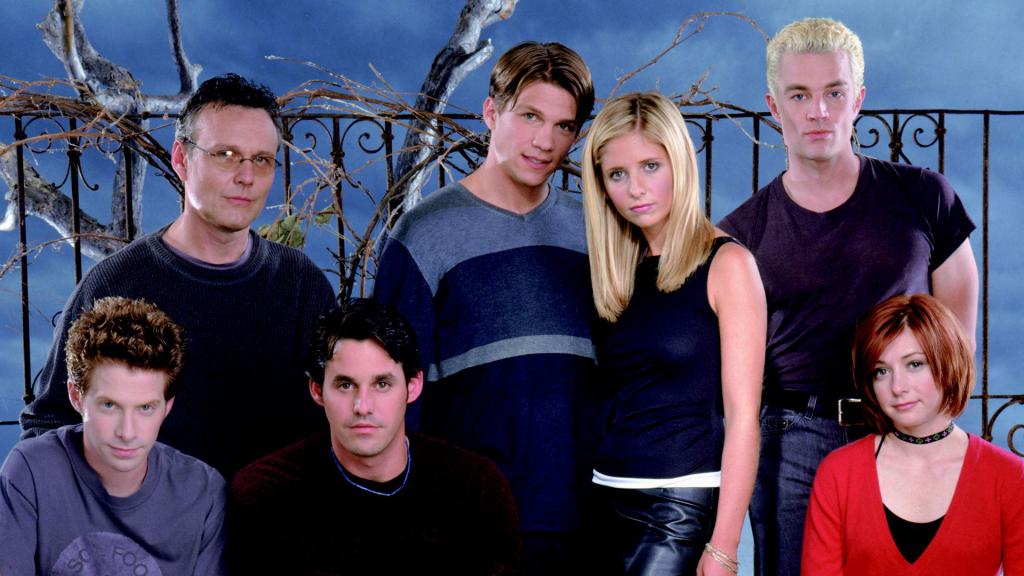
For many of us who were fortunate enough to attend one (and fortunate enough that their time to do so didn't coincide with a global pandemic), university was one of the most formative times of our lives. On the cusp of adulthood, away from home for potentially the first time, making new friends and pursuing new interests, maybe falling in love...
On the face of it, throwing Buffy The Vampire Slayer (and Buffy the character) into the world of further education makes perfect sense, and not just because, as touched on last time, the cast were by this point visibly not schoolchildren anymore. Buffy had always been about growing pains as much as fighting vampires, and this new setting for its fourth season was potentially ripe for exploring new experiences.
Also, it meant that poor Joyce's house could have a break from being smashed up every three weeks or so.
Of course, not every character can join Buffy, Willow and Oz at UC-Sunnydale. Xander, whose academic abilities have generally been portrayed up to this point as being somewhat remedial, ends up having a succession of jobs, though at least some of these will place him at the centre of various stories; Giles, meanwhile, what with being an ex-watcher and former school librarian, has little to do for much of this season beyond saying "Previously, on Buffy The Vampire Slayer..."
Ultimately, the significance of Season 4 in the wider Buffy story is mostly down to various character developments, only some of which are directly linked to the university setting. The main story arc is ambitious, but arguably the least well-realised of the whole run, and the done-in-one episodes vary wildly - though there is certainly one which is up there with the very best. Hey, there are gonna be SPOILERS ahead, quite obviously...
I'm aware that, up to this point, I've not really discussed Sarah Michelle Gellar's performance to any great extent. Despite being the lead character, there's something unflashy about her acting which means that it's somehow easier to notice some of the great cast around her. Except, when you stop and consider it, the character of Buffy is so multi-faceted that Gellar really deserves kudos for pulling it all off convincingly. She has to be a wisecracking and high-kicking action hero, single-minded leader, romantic heroine, rebellious teenager and goofy comedy character, and she has to do it all in such a way that everything feels like part of a convincing whole. (Of course, in real life we have plenty of different aspects to our characters, and end up adopting multiple roles depending on context and company - it's just that you don't necessarily always see people depicted like that in mainstream/YA film and television).
There's plenty for Gellar to get her teeth into (no pun intended) in her new environment. Somewhat less gifted in the learning stakes than best bud Willow, Buffy initially struggles with uni in a way which will no doubt strike a chord with plenty of insecure freshers through the ages. She's also, of course, still getting over the end of her relationship with Angel (again, a lot of new students will have left loved ones behind) and missing the mentorship of Giles (here, something of a stand-in for a trusted schoolteacher - Buffy's lecturers seem horrible, and one will indeed prove to be).
Comedy gets a look in too, of course. There's Buffy's annoying new roommate Kathy, with her Celine Dion posters and repeat plays of Cher's Believe. There's Buffy knocking a pile of books onto the head of imminent love interest Riley. And, most fun of all, Beer Bad boasts one of Gellar's best screwball performances as she falls in with some guys (including a pre-fame Kal Penn) in a student pub, not realising that the beer they're drinking has been spiked with some magic hoodoo that turns them into actual neanderthals. Luckily, Xander's job of the week is as bartender in the same pub and he manages to save the day, though not before the episode has managed to satirise both new students' susceptibilty to booze and town vs gown ill-feelings.
In the interest of fairness, I should probably say that this is the season where Xander stopped annoying me, at least in part because of the great double-act formed by Nicholas Brendon and Emma Caulfield as returning ex-vengeance demon Anya. The decision to make the architect of Season 3's The Wish not just a regular character, but a somewhat sympathetic one, is a great example of this shows' ability to get the best out of its actors. Having not been a human for over a thousand years, Anya's lack of understanding of social behaviour - and consequent willingness to speak her mind, entirely incognisant or uncaring of how other people will react - will be a great source of humour for at least three seasons. Something that always bothered me, though: after being turned back into a mortal teenager at the end of The Wish, where was Anya living? How was she making an income? If these things were ever explained, I certainly missed them.
NICE COSTUMES. VERY STEALTHY
Speaking of such matters, in a massively predictable turn of events, Buffy and Willow's psychology professor Maggie Walsh turns out to be the leader of a covert government initiative (called, er, The Initiative) tasked with the capture and study of the sort of supernatural creatures with which Sunnydale is infested; along with various other students, her teaching assistant Riley is really a soldier working for The Initiative. Now, as the season continues, we'll see the dark side of this explored, but I can't help thinking that the real victims in all this are Professor Walsh's students, whose teacher is clearly not going to be giving them her full focus and attention.
Teams of Initiative soldiers are glimpsed in the first few episodes of the season - as obvious as it is that Riley and his two best mates are under three of these balaclavas, I appreciate the way this storyline is gradually teased, akin to the way the comic books I read in my youth would throw in little cameos pointing towards later plot developments. Spike makes a reappearance, only to be captured by The Initiative, leading to both imprisonment and the insertion of a chip which causes him pain whenever he tries to hurt a human. There's a lot to unpack here - the facility in which Spike and various other beasties are being held feels like a vivisection lab, while it's telling that one of his first responses to the situation is to ask whether "the Nazis" are responsible. In terms of the ongoing direction of Buffy The Vampire Slayer, this development was the turning point in making Spike, already a fan favourite, into a sympathetic character and, ultimately, a hero. More immediately, though, it sets up a great scene after he escapes from demon prison and goes in search of Buffy, convinced she has something to do with his incarceration, only to find Willow instead. Thanks to the chip, his attempt to bite her results only in a piercing headache, leading to an extended conversation between the pair that brilliantly sends up the awkwardness of impotence, both actors' comic chops in full effect.

Of course, Willow also faces some life-changing events this season, but before we get to that a quick mention of the first really great standalone episode of the year. Fear, Itself was the second Halloween-themed story in the show's history, after the everybody-becomes-who-they're dressed-as one in Season 2, and, as the title would suggest, it does a splendid job of tapping into genuine dread when a frat house party is accidentally taken over by a fear demon. Buffy, Willow, Oz and Xander's anxieties manifest in physical ways as they are separated in the house: Buffy finds herself alone, Willow is unable to control her magic, Oz finds himself turning into a werewolf and Xander becomes invisible. The sight of Oz rocking backwards and forwards in a bathtub, trying to stop himself changing, feels like something from an actual horror film. But there's humour, too, with a great twist/punchline when the gang (including Giles and Anya) summon and defeat the demon.
As it turned out, this would be one of the last appearances for Oz, and not being able to control his wolfy side would be the reason. Annoying (and unpleasantly-named) angst-rock singer and (I think) fellow student Veruca is also a werewolf, which kicks up some sort of scent-based attraction between the two, and while Oz has sought to minimise the damage of his monthly changes, she's embraced the bloodlust. Ultimately, were-Oz kills were-Veruca to save Willow's life, but the whole experience leads Oz to leave Sunnydale and human company, afraid of losing control again. Heartbreaker, right? I mean, where are Dingoes Ate My Baby gonna find another guitarist?
Oh, OK. Obviously, the real sadness here comes from the fact that the relationship between Willow and Oz felt like the reallest, most earned, not to mention straight-out cutest coupling on the show so far. At least, until Willow's next one.
IT WASN'T SOMETHING I WAS LOOKING FOR. IT'S JUST POWERFUL
There are a few examples of foreshadowing in Buffy The Vampire Slayer. Later in Season 4, Buffy will have a dream where she and Faith are making a bed and the latter says, "Little sister's coming" - something which won't make any sense until the following series. But there's another one in Season 3's Doppelgangland, where Vampire Willow gets a little amorous with real-world Willow, prompting the latter to say, "That's me as a vampire? I'm so evil and...skanky. And I think I'm kinda gay." Buffy reassures her by saying that a vamp's personality is nothing to do with how they were as a human, swiftly cutting off Angel as he replies, "Well, actually..."
Tara is introduced in Hush, an episode we'll deal with shortly. She's a fellow member of Willow's Wicca group, and the only one who doesn't seem like a bit of a bellend. From the off, there's a connection there - in that episode, the pair end up holding hands to maximise their magical potential and move a vending machine telekinetically. The shy, stammering Tara of these early appearances is, if I'm being absolutely honest, just a little bit irritating, but Buffy is all about character development, and the slow blossoming of this relationship is one of the more sensitive examples of the entire run. Willow is cautious about introducing Tara to her mates, ostensibly because she wants a part of her life that is hers alone, membership of a gang of demon slayers not leaving much room for privacy. There's a thin line here; you could read this as a sign that gay relationships are best conducted in the shadows or off to the side. But Willow never seems ashamed of her sexual orientation, and there's something honest in the faltering but positive reaction Buffy has to the news of her friend's love for Tara.

Willow and Tara weren't the first openly lesbian characters on TV, but it was still early days for anything resembling proper representation. You can definitely read this as being part of the reason for the couple not even kissing onscreen until Season 5, originally aired seven years after Beth and Margaret's kiss in Brookside launched dozens of salacious and/or disapproving headlines in the UK press. Strangely, this slow build only made the relationship feel more romantic and genuine. It is nuts, though, to think that in the early 21st Century, there was still pressure from TV executives to downplay or conceal physical connections between gay characters. Well, until you remember that, a fifth of the way through the 21st Century, there are still people happily declaring their homophobia online every day. And there was, of course, backlash from a section of the Buffy fanbase at the time, and while some of that was probably down to the popularity of Oz, a certain amount was surely downright bigotry.
One last thing on this for now. I understand the drive for LGBTQ roles to be given, as a point of preference, to LGBTQ actors, but I can't imagine anyone complaining about the performances of Alyson Hannigan and Amber Benson here, neither of whom identify as gay in real life. And while introducing new gay characters rather than "turning" existing ones gay can also be positive, Willow's coming out is handled sensitively and with real impact.
CAN'T EVEN SHOUT, CAN'T EVEN CRY
So, on to Hush. As well as introducing Tara (and, for fans of hetero couplings, featuring Buffy and Riley's first kiss), this was the most formally daring episode of Buffy to date, a largely silent (or at least dialogue-free) piece thanks to The Gentlemen, contenders for the show's scariest villains, who steal the voices of, well, everyone in Sunnydale, all the better to carve out their hearts one by one.

The Gentlemen are creepy in a way that Buffy's vampire foes could rarely manage. Their smart-suited look is sinister in itself, with something of the undertaker about it, while their bald heads, deepset eyes and bared, shiny teeth give them an uncannily indistinguishable qualty. But what is perhaps most unnerving of all is their graceful movement, floating along and using exaggeratedly graceful hand gestures that feel like a parody of Victorian politesse. People will certainly have had nightmares about The Gentlemen since seeing this episode, but what's scariest is the creeping sensation that they might also have had them before.
The inability to speak provides as much of a challenge for the show's actors and creators as The Gentlemen do for its characters. In restricting its principals to silence, it ironically frees up the show to do something fresh; effectively forcing the cast to be mime artists for an episode gives them a chance to reveal their skills in physical comedy and facial expression. I believe Hush was the only episode of Buffy to nominated for an Emmy, not bad going for something which also includes a great sight gag based around masturbation.
As previously intimated, not all of the done-in-one episodes of Season 4 are anywhere near this standard. A Native American vengeance spirit here, Giles turned into a demon there; much of this feels like stuff we've seen before (though the latter example does feature some great Giles/Spike bantz). Much better is Superstar, in which occasional supporting character Jonathan takes the lead, and then some. The pre-credits sequence finds the Scoobies calling on an apparently important and universally admired Jonathan for help, a scene which feels like it will surely turn out to be a dream sequence or fantasy, given that the character has always been portrayed as something of an awkward geek. The actual credits sequence keeps this fiction going, with specially-filmed shots of Jonathan performing heroic feats cut in where we'd normally see Buffy. There's something quite fourth-wall-breaking about this; as it becomes clear that reality has somehow warped, retconning previous events so that Jonathan, not The Slayer, has been Sunnydale's saviour all along (as well as various other achievements, like inventing the internet), it's almost like the trappings of the TV show itself have been similarly corrupted. Obviously, it turns out that Jonathan had created this illusion with a spell, a bit like that time Xander made himself super-attractive to all women but with more world-altering consequences. It won't be the last time Jonathan's magical abilities lead to trouble.
Is it telling that it's been about a dozen paragraphs since I last mentioned the supposed main story arc of this season? Probably, and before we do go back there, let's discuss something sparkier, namely the return of Faith. Finally waking from her bed in a dingy and remarkably under-populated Sunnydale hospital, the renegade Slayer takes revenge on her nemesis with the help of a little beyond-the-grave gift from deceased father figure the Mayor. A highly effective cliffhanger at the end of the first half of this two-parter finds the two Slayers body-swapped, with Buffy unconscious in Faith's body, ready to face justice at the hands of the Watchers' Council.
Sarah Michelle Gellar and Eliza Dushku both deserve huge props for their performances (effectively, as each other) in Who Are You, the concluding part of the story. Gellar nails Faith's wayward swagger so well that it's remarkable that Tara, who hardly knows her, is initially the only one to realise that Buffy isn't, well, Buffy; Dushku has a less showy job to do as Buffy, but as we're so hard-wired to see her as a villainous, ungovernable force, she does a highly effective job in reining it in so that we can accept that it's Buffy in there. It's slightly head-melty to talk about this, but both actors make it work brilliantly. It also fits into a mini-canon of identity shake-up episodes within Buffy, like Doppelgangland or Season 5's The Replacement (or, I suppose, the one where Giles becomes a demon, but whatever...)
DOES ANYONE ELSE MISS THE MAYOR?
So, anyway, back to the main plot, I guess. If it was little surprise to discover that Professor Walsh was also head of The Initiative, it was similarly predictable that she would turn out to be something of a bad egg. There's a brief period when, having discovered each other's secrets, Buffy and The Initiative attempt to work in tandem, but it quickly becomes apparent to Walsh that Buffy is a threat to her secret project, a creature called Adam composed of various demonic, human and robotic body parts. There's an admittedly decent denouement to this, when she's sent Buffy into a trap in some sewer, armed only with a faulty gun and a camera. Believing her to have been killed by demons, she breaks the news to Riley, only for Buffy to become visible on the monitors behind her, to announce, "If you think that's enough to kill me, you really don't know what a Slayer is. Trust me when I say you're gonna find out."
Very cool.
So, obviously at this point it seems like Walsh is the season's Big Bad... except, in an actual surprise, she ends the episode skewered by an unexpectedly-conscious Adam, who rather chillingly utters the word, "Mommy".
Adam is, somehow, both creepy as fuck and slightly rubbish. His similarity to Frankenstein's Monster is so undeniable that it's referenced several times, and there's something unnerving about his actions and motivations: dissecting humans and demons to find out how they work, and ultimately aiming to create an army of human/demon/cyborg creatures like himself. He turns Riley's mate Forrest into something like this, and reanimates Walsh and her assistant as zombified medical workers. The latter is realised with a particularly unpleasant visual look, taking Buffy into body horror territory. However, Adam's actual appearance is... OK, look: it's possible, throughout the run of this show to ignore the fact that the vampire make-up can be a little cheap-looking (and also not to wonder why it's only named characters who tend to default to human appearance, when their henchmen seem to stay "on" as vampires constantly - but that's another topic). However, Adam just looks rubbish, like a shit lifesize action figure. I'm not saying it would have been easy on network TV in the year 2000 to create a convincing look for a creature cobbled together from bits of human, demon and tech. I'm just saying maybe they should have had another go at it before finalising the design. Another few goes, maybe.

However, it remains the case that Adam is a particularly dangerous adversary, in terms of both his actual power and the way he's driven not by simple lust for power (the motivation which, ultimately, all of the show's previous Big Bads have shared) but by something more philosophical. In a conclusion which only feels slightly Deus Ex Machina, the core Scoobies use magic and some poorly-explained Slayer lineage hokum to imbue Buffy with extra power from Willow, Xander and Giles, temporarily turning her into an uber-powered being capable of defeating Adam.
Really, the best thing about this conclusion was that it restored the equilibrium of these four as the show's lead characters; perhaps part of the reason this season's Initiative-based story arc felt unsatisfying is that it often featured Buffy working alone, away from her friends. These final scenes also provided a great shot of them walking into a room to include on the opening credits of future seasons.
I SAID THERE COULD BE DIRE CONSEQUENCES
Except this wasn't the end of Season 4. The actual final episode, Restless, is a slightly bonkers but not insignificant series of dream sequences as the feral First Slayer stalks the dreams of the Big Four, having presumably been "let in" by the previous episode's magic shenanigans.

It's a "quieter" way to end a season than the usual epic battle, and a way to bring back various characters in dream cameos, including Principal Snyder (playing the Kurtz role in an Apocalypse Now segment in Xander's dream) and, for the last time, Oz (in Willow's dream). As with the affinity for the stuff of nightmares in Hush, this episode demonstrates an understanding of what dreams feel like, with their own logic (or lack of) and the bubbling up of suppressed fears or desires. Spike, Tara, Anya, Joyce, Riley and even Adam all turn up in various forms, and characters move between locations in ways that, again, almost break the fourth wall by revealing the artificiality of the show's sets.
Much of Restless is genuinely funny, though the deaths meted out by the First Slayer at the conclusion of Willow, Xander and Giles's dreams are anything but. Only Buffy gets to confront her predecessor, rejecting her exhortations (voiced through Tara, as the original deals strictly in the non-verbal) that a Slayer must sacrifice her humanity to do the job. ("I have no speech, no name. I live in the action of death. The blood cry, the penetrating wound. I am destruction, absolute, alone.") By walking away from her, Buffy breaks the spell and saves the day. It's a neat end, one that emphasizes the imprtance of the Scooby Gang and draws a line under their drifting apart throughout the season.
Things decisively pick up again in Season 5, with the most powerful Big Bad to date and a new arrival who literally changes Buffy's world. As Tara puts it at one point in Buffy's dream: "Be back before dawn..."
